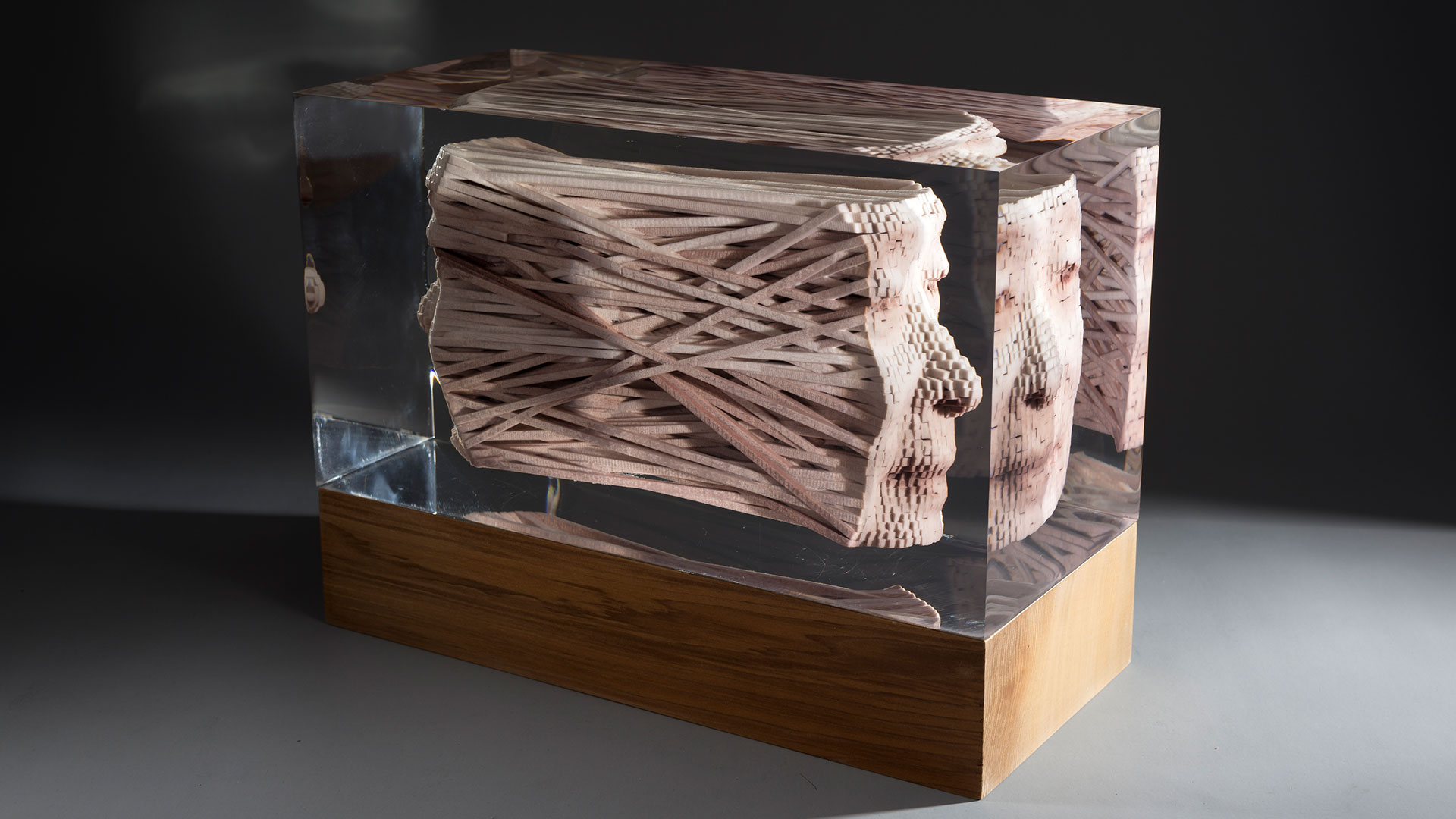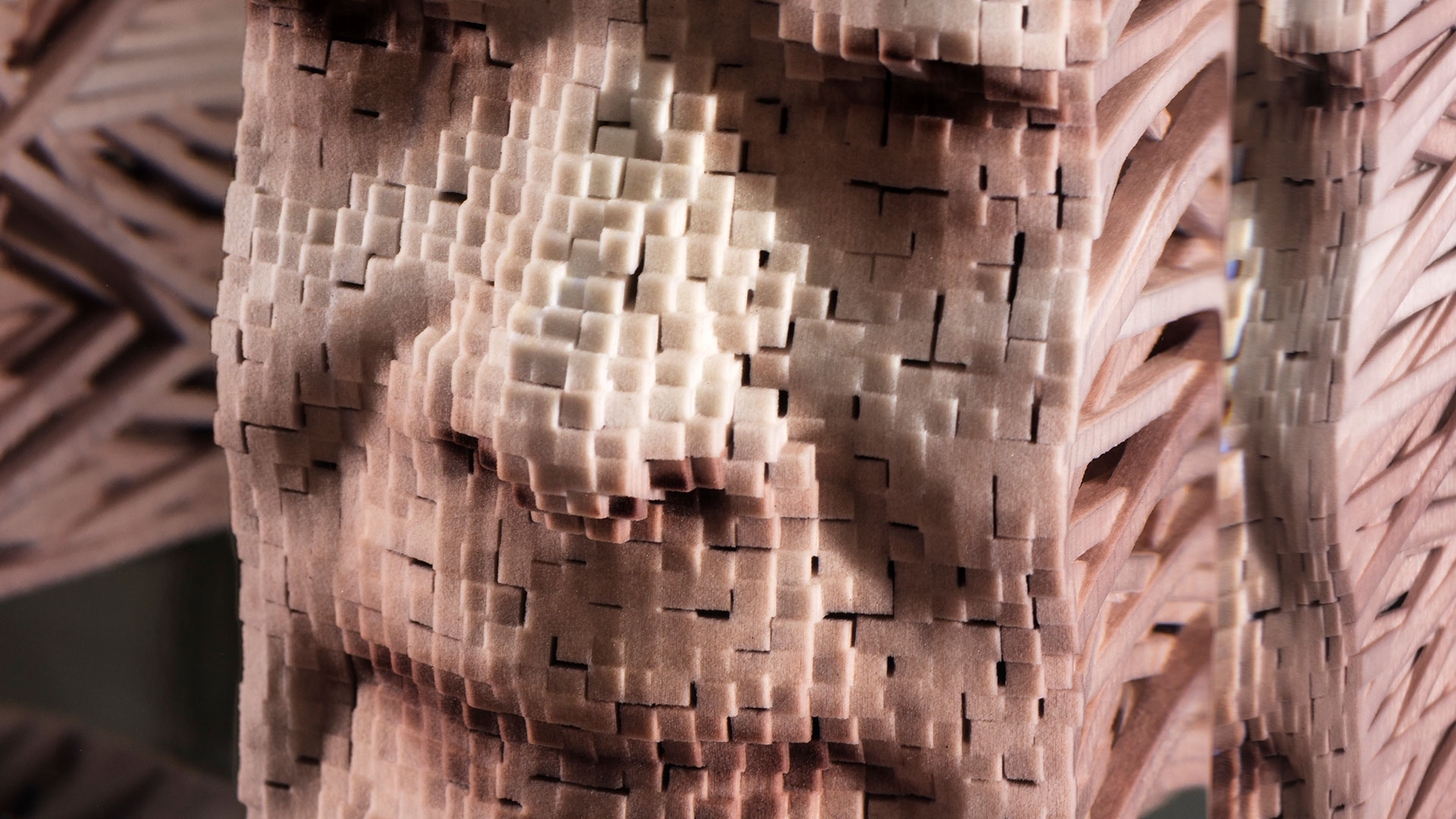
血脈之線
Bloodlines
「有什麼雕塑或是結構是唯有透過3D列印,而無法藉由其他工法創造的?」黃心健在思索當前的生產技術時,產生了如此疑問。如同攝影術的出現影響了繪畫的走向,藝術發展與新技術的出現總是緊密相連,《血脈之線》便是在這樣的思考脈絡下產生的作品。
黃心健從2019年開始《血脈之線》系列創作。他運用了數位掃描及3D列印技術,將兩張具有相同血緣的臉孔進行3D掃描,再將掃描結果透過軟體計算,找出兩張臉孔中具有相同膚色的部份,將之相互連接。
以往的雕塑來自於雙手一槌一鑿的塑形。黃心健認為現今的雕塑則是可以數值化的:記錄下的空間數值等同於對形體的掌握,透過數值紀錄的運算,比對形體間的差異,將其連接,最後透過3D列印機賦予塑形,將一連串運算結果產生的空間座標數值輸出為具體造型。
從微觀的角度思考,生命的傳承是一段段DNA螺旋結構中的資訊,透過血緣延續、保存。血緣在黃心健的創作中轉化為資訊化的結構,並透過此結構開展對於生命與記憶的思索。
“What kind of sculpture or structure can only be created with 3D printing and no other methods?” This was the question Huang asked when contemplating the current production technology. Just as the emergence of photography impacted the development of painting, the development of art is intimately connected with the emergence of new technology. The work Bloodlines was created amid this thought context.
Huang started creating the Bloodlines series in 2019. Incorporating digital scanning and 3D printing techniques, Huang used 3D scanning to process the faces of two people who are related by blood. The scanned images underwent a software calculation to detect and connect the places where the faces show the same skin tone.
In the past, sculptures were made with the hammering and chiseling of the hands. Huang believes sculptures of today can be numeralized, as documentation of the numerical value of space enables the grasp of form. Through calculations of numerical value, differences between forms can be compared and connected, which is finally shaped through a 3D printer, resulting in physical forms created through spatial coordinates determined according to calculation results.
From a micro perspective, the legacy of life lies in the information embedded in the spiral structures of the DNA, which are prolonged and preserved through blood relations. In the works of Huang, blood relations are translated into an informational structure that inspires further contemplation on life and memory.



